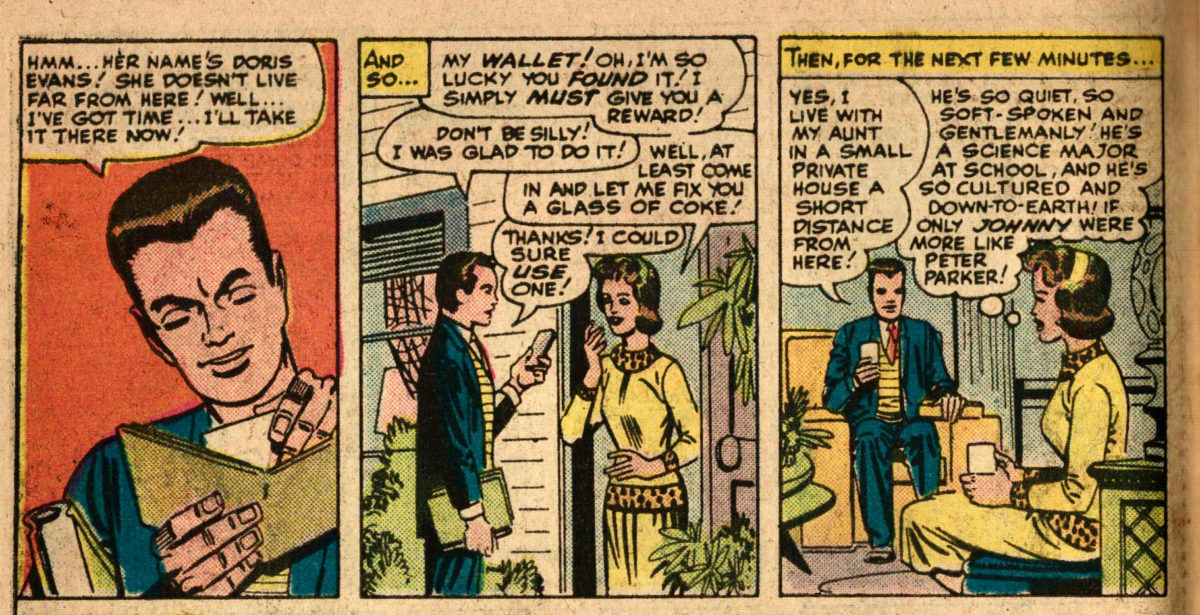Featuring: Spider-Man
Release: April 9, 1964
Cover: July 1964
12 cents
Writen by: Stan Lee (The poor man’s Shakespeare)
Illustrated by: Steve Ditko (The poor man’s Da Vinci)
Lettered by: Art Simek (The poor man’s rich man)
22 pages

There are things to like about this comic. The new villain is pretty goofy, perfect for a one-off issue of frivolity. Bring back the Enforcers and throw in the Hulk, and you have a recipe for a fun time.


But look to this first panel. It’s very interesting. A great panel, actually. You see the villain’s mask in the foreground and the shadowed villain in the background. Spider-Man has had a few unmasking scenes of late. Electro turned out to be someone he’d never heard of. Big Man turned out to be Peter’s colleague, Fred Foswell. This opening panel suggests we will get another dramatic unmasking… except we won’t.
They will save the unmasking for a later issue. Spider-Man actually fails to decisively defeat this goofy villain. Which suggests the Green Goblin will return. A bad idea. The character might be fun for one issue, but not as a recurring villain. Especially when Spider-Man aready has such a robust rogues gallery of far more interesting characters: Chameleon, Vulture, Tinkerer, Dr. Octopus, Sandman, Lizard, Living Brain, Electro, Big Man, Enforcers, and Mysterio.

The second panel is a line that’s rather amusing with the benefit of hindsight. “I made the controls simple enough that there’s no chance of fatal error.” If you’ve read further in Amazing Spider-Man, you know he will redesign his flying device and forget that particular design principle. I had suggested this panel to my friend Brian for his Past Was Close Behind series.
The Green Goblin refers to his device as a “flying broomstick”, keeping to a magic/fairy tale theme.
Continue reading “Amazing Spider-Man #14”




























